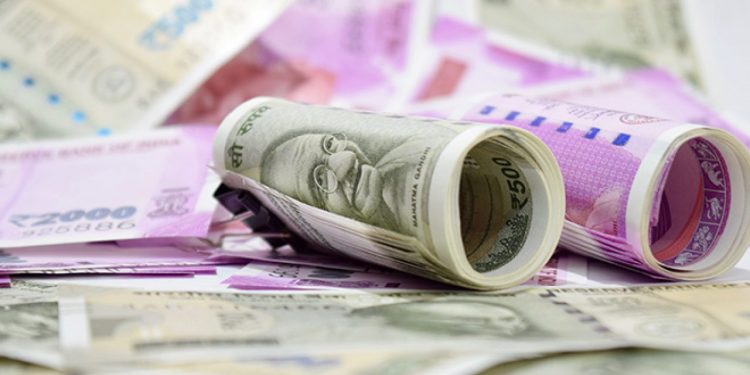Ajit Ranade
In the last week of November, the government confirmed that India was officially in a recession, possibly for the first time in modern history. The technical definition of a recession is when the economy contracts for two successive quarters, i.e. three month periods. Between April and June India’s economy went down by 24 percent, and between July and September it shrunk by 7.5 percent. These compression rates are as compared to the level of GDP one year ago respectively. The first quarter contraction was explained mostly by the severe lockdown ordered by the Central government to tackle the spread of the pandemic. The second quarter continued to be in the negative territory, although this contraction was less than what was feared. At this rate the overall economy will shrink by around 8 to 10 percent overall for this fiscal year. This would translate into a loss of national income of about `16 to 20 lakh crore, or between `12,000 and `15,000 per person. This loss of income is because many services business like hospitality, tourism, travel and retail shops have had to completely shut down.
Lack of demand has also meant the scaling back of production and employment in many other sectors. The most acute pain has been in the informal and unorganised sector, comprising small businesses. The hit to this sector is most severe and will be fully known after a lag, because their data is not automatically captured in the Ministry of Corporate Affairs, as it is for the larger and formal sector companies. Former Chief Statistician of India Pronab Sen has said that the small and medium enterprises (MSME) which contribute 45 percent of the country’s industrial output could be affected very badly, resulting in Q3 and Q4 losses of GDP too.
As such, the MSME guaranteed loan package offered by the government has not been fully subscribed, as small businesses are reluctant to take on more loans. They fear bankruptcy. The Mudra loans already given out to small businesses are in danger of turning delinquent and adding to the non-performing loans of the banks.
Beyond the loss of national income is the loss of jobs. Since ninety percent of the workforce is in the unorganised sector, the workers in this sector work without a formal contract, without health insurance and pension and without other benefits. It is difficult to keep an exact track of the status of this section of the labour force. One source is the weekly employment survey by CMIE, a private organisation. During April, when the lockdown hit was most severe, nearly 122 million people became jobless. That number has come down sharply, and since July the number of unemployed maybe in the range of 28 million. More tellingly many workers may have dropped out of the labour force, especially women, altogether. This will lower the denominator and misleadingly tell us that the unemployment rate is dropping. But what we need to watch for is the labour force participation rate, both for men and women. This is what provides incomes to families. As for the organised sector employees the data from EPFO shows a decline in formal sector employment. CMIE also reported that by July nearly 20 million formal sector, salaried individuals had lost their jobs this year so far. In the preceding quarter some of them may have found new employment, as recruiting picked up.
As a result of the recession year, India’s potential growth rate has dropped to 4.5 percent as per the Oxford Economics Research Organisation. This is the medium-term attainable growth rate. But even now as the economy tries to recover from the depths of recession, there are worrying signs of inflation picking up. It is currently close to 7 percent and the outlook is that it will remain high. Food grains and vegetable prices may go down after harvest time, but commodity prices including metals, cement, oil and chemicals are inching up.
Just a week after the GDP data release for the last quarter, the Reserve Bank of India announced its latest monetary stance. The current policy rate, i.e. interest rates at which liquidity is supplied to commercial banks is the lowest it has been. This policy rate is at 4 percent. But even the RBI is worried about inflationary pressure building up. The official statement of the RBI is a study in contrast. On one hand it says it will pursue its accommodative policy as long as necessary to revive economic growth. So, money supply will be high and credit will remain cheap. On the other hand, it is cautious about inflation, and it says GDP momentum is building up. Inflation calls for tightening money supply and recession calls for loosening money supply. The RBI seems to
be in a Catch-22 situation. Meanwhile, too much liquidity is firing up the stock market. To top it all, the large listed companies reported record profits in the July-September quarter.
Classical economics did not anticipate coexistence of inflation and recession. When demand is down, naturally prices would go down, as producers offer discounts, faced with excess capacity. But when there are supply shocks, such as those caused by the pandemic and the lockdown, which reduces the potential growth rate, then we face the spectre of simultaneous recession and inflation. Navigating out of this will need a fiscal stimulus to shore up consumer spending, an investment revival to increase the productive capacity of the economy and a careful management of inflationary expectations. Concomitantly the government will also need to pursue redistribution of income to reduce the widening disparity. This also calls for fiscal prudence to cut wasteful spending, find new revenue through asset sales, mining and spectrum auctions, and build investor confidence. All this will call for the most astute economic and expectations management. It’s going to be a busy Budget season.
The writer is an economist and Senior Fellow, Takshashila Institution. The Billion Press.






































